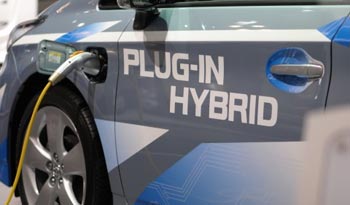A national survey of consumer attitudes towards plug-in electric vehicles suggests that people would prefer control to convenience in many charging scenarios, and also that renewable energy sources are an important component.
The survey, released today by researchers Brandon Schoettle and Michael Sivak of the University of Michigan Transportation Research Institute, includes responses from 542 people. Although a majority of the participants have never owned or ridden in an electric vehicle, 17 percent had some prior experience with the technology.
Among the report’s findings:
- To manage the costs and electricity demand at home, 73 percent of people would elect optimized charging vs. on-demand charging. Optimized charging allows the system to manage and plan vehicle charging, for example, charging at off-peak times.
- A majority of 65 percent said they’d prefer to prioritize renewable energy sources rather than settle for standard optimized charging.
- Nearly all—84 percent—would like to be able to “reverse charge,” or feed electricity from their vehicle back to the public grid in exchange for reduced rates or other compensation. Reverse charging could also help reduce power plants’ load during peak times.
“We noticed that people tend to prefer the things that give them the most control, rather than the most convenience,” Schoettle said. “For example, respondents seemed to think that a traditional cable was the best way to recharge, even though inductive wireless charging could enable a self-fueling vehicle. A person wouldn’t be required.”
The report also compared the ability of current regulatory standards to support the various charging scenarios included in the survey. The researchers found that not all regulatory standards would currently support consumers’ top requests.
“A system that operates correctly, yet fails to satisfy the preferences and expectations of the PEV users, may end up limiting future acceptance of such systems and PEVs in general,” the report states. “This might be especially applicable to consumers who may already be reluctant to adopt a relatively new technology like PEVs. Furthermore, potential future uses of PEVs to enable self-fueling of self-driving vehicles may be problematic or unfeasible without the support for scenarios such as plug-and-charge and eVehicle roaming.”
Today plug-in electric vehicles make up 1 percent of cars on the roads, but their popularity is growing. That’s due, in part, to rising federal fuel economy standards and the added possibility that they could be the ideal vehicle type for future self-driving vehicles.
The study is titled “Consumer Preferences for the Charging of Plug-In Electric Vehicles.”


